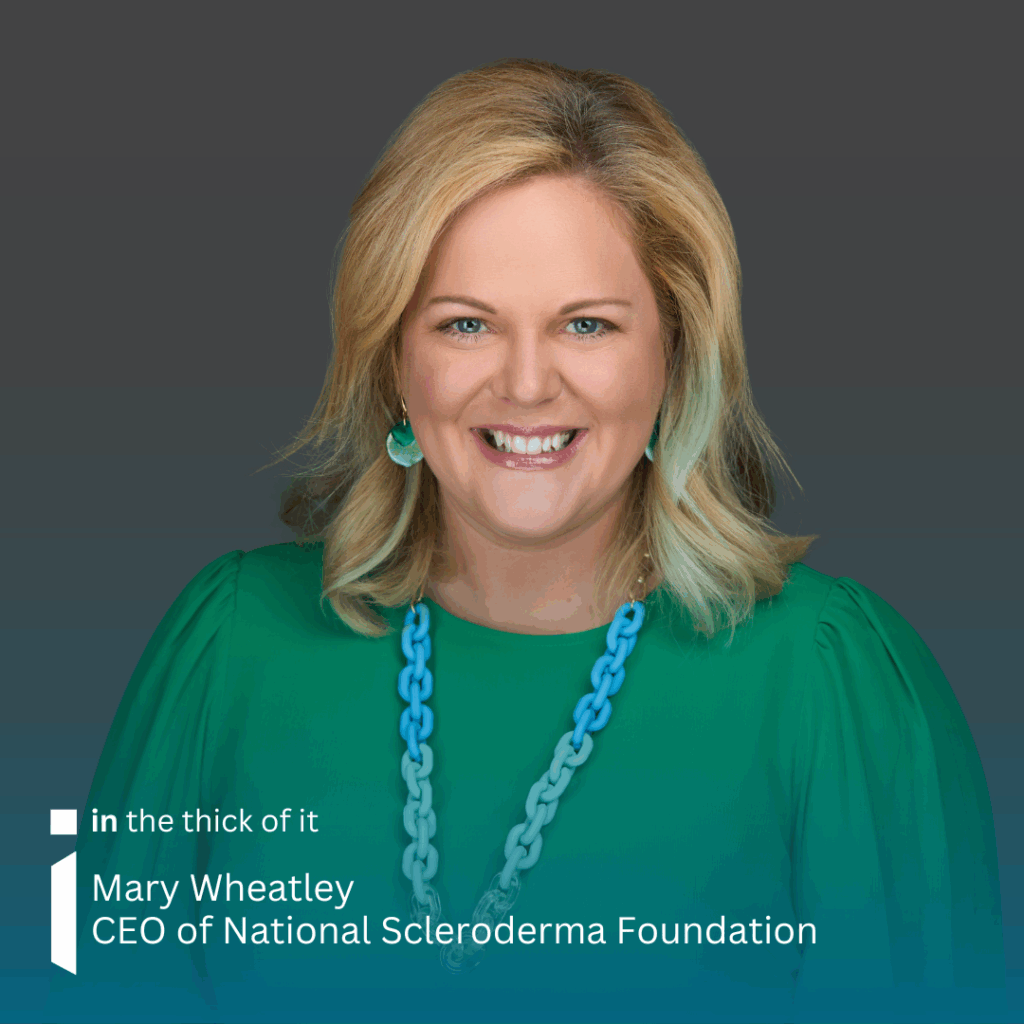Putting you in the heart of the rare community – National Scleroderma Foundation
Estimated reading time: 3 minutes
Patient advocacy groups deliver their top three unmet needs and main asks of industry to best serve their rare community. This week’s insights come from Mary Wheatley, CEO, National Scleroderma Foundation


The National Scleroderma Foundation is committed to advancing medical research, promoting disease awareness and providing support and education to people living with scleroderma, their families and their support networks. The Foundation hosts more than 30 educational events and supports more than 45 active support groups. The Foundation’s largest event is the annual National Scleroderma Conference. More than 500 people gather for workshops, panel discussions and other educational sessions led by leading scleroderma researchers and healthcare professionals.
The Foundation is also committed to raising awareness and supporting cutting-edge research. Annually, the Foundation and its chapters host more than ‘40 Stepping Out to Cure Scleroderma’ awareness and fundraising events. Since its founding, the Foundation has awarded more than $34 million to advancing medical research in scleroderma. The Foundation provides grants supporting new and established investigators.
Scleroderma is a rare disease that affects connective tissue and the vascular system. This causes an overproduction of collagen (fibrosis) in the skin and internal organs. Scleroderma can be found in two general forms, localised scleroderma and systemic scleroderma.
One of the most challenging things about scleroderma is that it presents differently in each person. Frequent symptoms include pain and stiffness in joints, persistent cough, interstitial lung disease, pulmonary arterial hypertension, Raynaud’s and more. Researchers are still working to understand the exact cause of scleroderma and ultimately find a cure.
What are your top three unmet needs or main asks of industry to best serve your rare ecosystem?

Systemic scleroderma has one of the highest mortality rates among autoimmune rheumatic diseases, largely due to complications, including interstitial lung disease (ILD), pulmonary hypertension and cardiac involvement.

There is a lack of effective therapies. Currently, there are no FDA-approved disease modifying therapies for the primary form of systemic scleroderma.

Fragmented understanding of the disease mechanisms. The exact cellular and molecular processes that drive fibrosis, vasculopathy and immune dysfunction are largely unknown. In addition, SSc is heterogeneous in its presentation, making it difficult to predict disease progression and response to treatment.
Connect with Mary
in the thick of it puts you in the heart of the RARE communities you serve.
To connect with more RARE communities click below.

